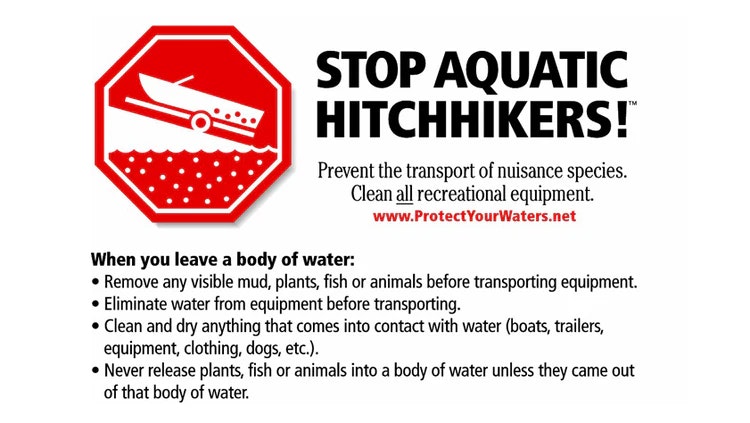Invasive Mussel Prevention
Stumpy Meadows Reservoir - Invasive Mussel Prevention

The aquatic invasive species, Golden mussel, was found in the Sacramento-San Joaquin Delta in October 2024. The mussel poses an infrastructure, recreational and environmental threat to California waterways. Stumpy Meadows Reservoir has NOT been impacted, but water quality sampling has determined Golden Mussels can survive. To prevent impact to Stumpy Meadows Reservoir refer to the following guidelines.
Be A Good Steward and Keep Stumpy Meadows Open

Self Inspection Checklist
To prevent the spread of invasive mussels, recreators should inspect all exposed boat surfaces when leaving the water. If planning to lauch at Stumpy Meadows Reservoir, follow these steps to clean, drain and dry your vessel BEFORE launching:
- Physically inspect all exposed surfaces of your boat;
- Remove aquatic plants from motor and trailer. Check all underwater fittings and equipment, such as rollers, axle, bilge, and trailer and above water equipment, such as anchor, and live wells. Dispose aquatic plants in the trash;
- Drain all water from the watercraft including from the motor, bilges, live wells, and bait buckets;
- Thoroughly wash the hull and all water tanks. This is especially important if the watercraft has been moored for more than a day;
- Preferably wash with hot water, high-pressure hose, but if unavailable any potable water source is better than nothing;
- If a trailer was used to remove the watercraft from the water, thoroughly wash the trailer as well;
- Drain all wash water and dry the watercraft and trailer;
- Watercraft should remain dry and out of water for at least five days in hot, dry weather or up to 30 days in cool, moist conditions;
- Keep watercraft dry between launches in different water bodies.
Links to more information about invasive mussels:
California's Invaders: Golden Mussel - California Department of Fish and Wildlife
Boat Clean Procedures - California State Parks Boating and Waterways
Golden mussel Fact Sheet - California Department of Fish and Wildlife
If not properly cleaned, transported and trailored, boats, kayaks, canoes, paddleboards and other watercraft can transport invasive mussels between watershed, potentially causing significant damage to freshwater ecosystems, fisheries and critical water supply and hydroelectrical power generations facilities. They can also damage boat hulls, motors and other equipment.
